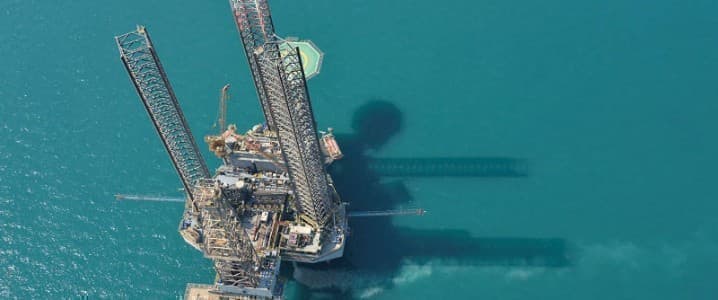The market shock from the pandemic and the resulting crash in oil prices expectedly dragged down the net profit of the world’s biggest oil company and largest oil exporter, Saudi Aramco.
The 2020 year of COVID also upended the development plans of the Saudi state oil giant at the oilfields it co-owns with other countries in the Gulf.
In early 2020, Saudi Arabia and Kuwait were preparing to significantly boost oil production in the so-called neutral zone between the two countries after ending a five-year spat over concessions. Both sides had grand plans to pump as much as 550,000 barrels per day (bpd)—or 0.5 percent of daily global oil supply—from the jointly owned fields by the end of 2020.
The unexpected events last year, however, led to the fields producing just around 120,000 bpd, which for Saudi Aramco means up to 60,000 bpd as output is equally divided between Saudi Arabia and Kuwait, Aramco’s president and chief executive officer Amin Nasser said on the call after the 2020 results release.
Not only did the pandemic slash Aramco’s profits in 2020, but it also put on ice its plans to quickly ramp up production from the fields it shares with Kuwait in the neutral zone. Related: 13 Million Barrels Of Oil Could Be Affected By Suez Canal Blockage
The so-called Partitioned Neutral Zone (PNZ) was established between Saudi Arabia and Kuwait in 1922 to settle a territorial dispute between the two neighboring countries. As of 2015, the oil production capacity in the neutral zone stood at a total of 600,000 bpd, equally divided between Kuwait and Saudi Arabia, according to the U.S. Energy Information Administration (EIA). Production from the zone averaged around 500,000 bpd just before the shutdown of the two oil fields, Al-Khafji and Wafra, in 2014-2015.
Operational differences and a worsening in bilateral relations led to the suspension of production back in 2015. The worsening came as Saudi Arabia renewed Chevron’s concession for Wafra. According to the Kuwaiti side, Riyadh did that without consulting it.
One of the upstream milestones Aramco boasted in its 2020 presentation was resumed operations at the Al-Khafji oilfield.
Just after the owner of Saudi Aramco, Saudi Arabia, broke the OPEC+ pact with Russia in March last year, contributing to the oil price crash in the demand collapse, Abdullah Mansi Al-Shammari, Deputy CEO Finance and Management at Kuwait Gulf Oil Company, told Reuters that total production from the two oilfields, Al-Khafji and Wafra, would hit 320,000 bpd by the end of 2020.
During the Saudi-Russia price war in March and early April 2020, Kuwait even exported its first cargo of Khafji crude oil, after the nearly five-year hiatus—during which the fields were not pumping oil.
But after the new OPEC+ deal entered into force in May 2020 to prevent another price collapse and help the market to rebalance in the face of plunging fuel demand, the Saudis, the Kuwaitis, and all OPEC+ members had to scale back oil production much more than they would have done had they kept the initial agreement.
The restart of production at the Al-Khafji oilfield last year marked the end of a five-year hiatus due to disputes. Still, the much lower-than-expected output from the neutral zone highlighted the challenges in ramping up production from oilfields that haven’t pumped oil in years, and operational decisions on major oilfields in the Middle East depend largely on OPEC’s policies, which is effectively led by Saudi Arabia.
The future OPEC+ policies on withholding oil supply from the market will determine whether the Al-Khafji and Wafra fields shared with Kuwait could return to pumping meaningful volumes of crude soon.
As of February, OPEC’s spare capacity, excluding Iran, stood at 7.7 million bpd, mostly in the Middle East, the International Energy Agency (IEA) said in its monthly report earlier in March, when it said that with “plenty to spare” capacity and still abundant supply, there is no supercycle for oil around the corner.
By Tsvetana Paraskova for Oilprice.com
More Top Reads From Oilprice.com:
- California Senators Urge Biden To Phase Out Gasoline Cars
- Three Commodities Set To Boom As The Global Economy Recovers
- How Will We Pay for the Energy Transition?


















